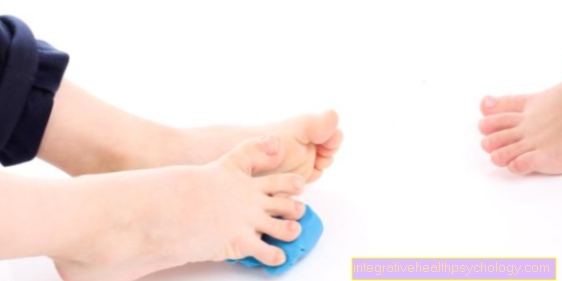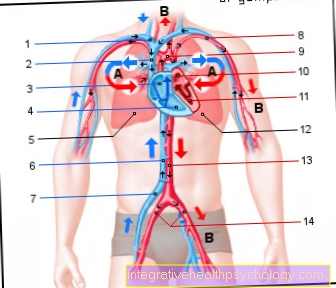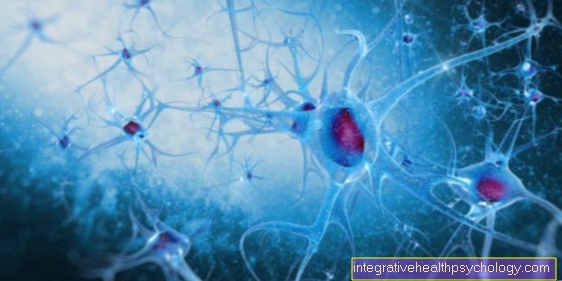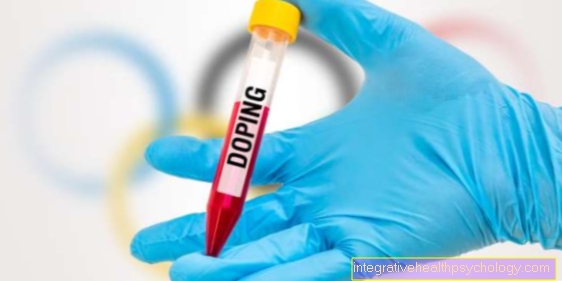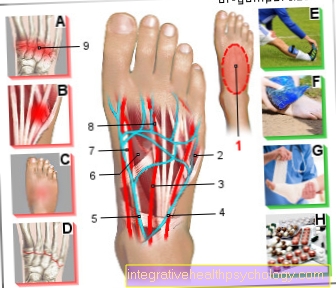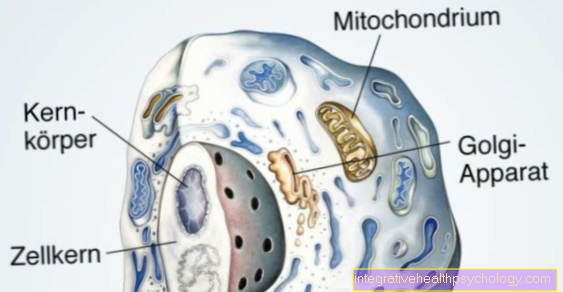Stevens Johnson Syndrome
What is Stevens-Johnson Syndrome?
Stevens-Johnson syndrome is a very rare, serious disease.
The cause of this disease is often a previous infection or the use of a new drug. The disease is caused by an overreaction of the immune system. The disease becomes noticeable by a peeling of the skin, painful blisters and a strong feeling of illness.
Women are usually affected much more often than men. People who suffer from HIV disease are also particularly affected.

What are the causes?
There are two main causes that can trigger Stevens-Johnson Syndrome. On the one hand, a previous infection or, on the other hand, taking a new drug.
Stevens-Johnson syndrome occurs mainly in the first 8 weeks after taking a new drug. There are some drugs that are more commonly associated with Stevens-Johnson syndrome than others. These include above all drugs with the active ingredient allopurinol (used in gout) and drugs with the active ingredient group of sulfonamides such as cotrimoxazole (antibiotic).
You may also be interested in this topic: Drug intolerance
How is Stevens-Johnson Syndrome diagnosed?
With the help of an interview with the patient (anamnesis), the doctor can find out possible triggers for Stevens-Johnson syndrome.
A physical exam will then be performed. Often times, the doctor can suspect Stevens-Johnson syndrome based on the clinical appearance with a suitable anamnesis.
To be on the safe side, a skin biopsy is taken to confirm the diagnosis of Stevens-Johnson syndrome.
This topic may interest you as a differential diagnosis to Stevens-Johnson syndrome: Drug eruption
What are the symptoms of Stevens-Johnson Syndrome?
A peeling of the skin surface is characteristic of the Stevens-Johnson syndrome. The skin appearances are circular and vesicles often form. The appearance of these reminds of a burn. The skin is reddened and crusted. These sores on the skin are very painful.
The additional involvement of the mucous membranes is indicative of Stevens-Johnson syndrome. This mainly affects the mouth and throat, as well as the genital area. In addition to symptoms on the surface of the skin, there is often inflammation of the conjunctiva of the eyes.
In addition, those affected very often suffer from a strong feeling of illness, fever and inflammation of the nasal mucous membrane (rhinitis).
Read more about this:
- Medication rash
- Rash after previous infection
In which places does Stevens-Johnson Syndrome occur in particular?
The involvement of the mucous membrane is characteristic of Stevens-Johnson syndrome. This means that the mucous membrane is always affected. Mucous membranes are mainly found in the mouth and throat as well as in the genital area, which is why these parts of the body are very often affected by Stevens-Johnson syndrome.
The places where the skin surface peels off are often on the trunk. The face, arms, and legs can also be affected.
In addition to the skin symptoms, conjunctivitis is very common.
therapy
If Stevens-Johnson syndrome developed as a result of taking a new drug, it should be stopped immediately. In general, it is important to avoid the triggering cause if it is known and possible.
Intensive therapy is similar to treating burns: fluids are given, the wounds are treated and, if necessary, consequences such as blood poisoning (sepsis) or bacterial infections are treated with antibiotics.
The administration of drugs that suppress the immune system, such as cortisone, is controversial and is not generally used. In individual cases, of course, other treatment options can also be used.
Duration
There is no one size fits all rule of how long Stevens-Johnson syndrome will last.
The duration mainly depends on how quickly the treatment is initiated and how well the therapy works. As a rule, a few days to weeks can be expected.
How is the process?
The affected patients very often suffer from a very strong feeling of illness and are very seriously ill. It is therefore important to diagnose Stevens-Johnson Syndrome early and treat it immediately.
In some cases, the disease can be very severe. This severe form of Stevens-Johnson syndrome is known in technical terms as toxic epidermal necrolysis (TEN).
What is the prognosis?
Stevens-Johnson Syndrome is a very serious condition.
In some cases it can be very severe. Depending on the severity of the disease, the probability of dying from the disease is 6% in the mild form up to 50% in the severe form (toxic epidermal necrolysis).
What can the long-term consequences be?
The disease usually heals without scarring.
It is important that the wound surface is not manipulated, such as scratched. The wound surfaces should also be treated and cared for regularly to prevent scarring.
Read more about this: Wound healing
Is that contagious?
Stevens-Johnson syndrome is not contagious. In this rare disease, the immune system of a few people overreact, which is why this disease occurs.
Diseases that are triggered by a bacterial or viral pathogen are usually contagious. This is not the case with Stevens-Johnson syndrome.
Also read our topic on a similar disease, the Staphylococcal Scaled Skin Syndrome, which is triggered by bacteria: Staph infection
How is Lyell Syndrome different from Stevens-Johnson Syndrome?
The Stevens-Johnson syndrome defines a skin involvement of less than 10% of the total body surface. If up to 30% of the body surface is affected, one speaks of a transitional form. If more than 30% of the body surface is affected by the skin, one speaks of toxic epidermal necrolysis.
This is also known as Lyell's syndrome when the disease was triggered by taking medication. This is a severe and life-threatening drug reaction. Drugs that can cause toxic epidermal necrolysis (Lyell's syndrome) include: phenytoin, sulfonamides, allopurinol, and selective serotonin reuptake inhibitors (SSRIs) such as fluoxetine.





